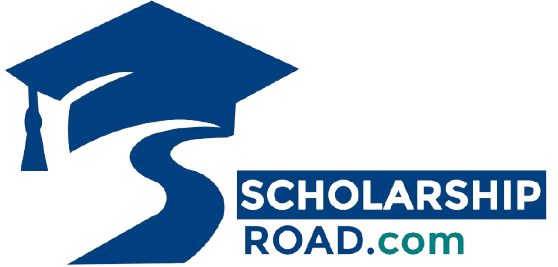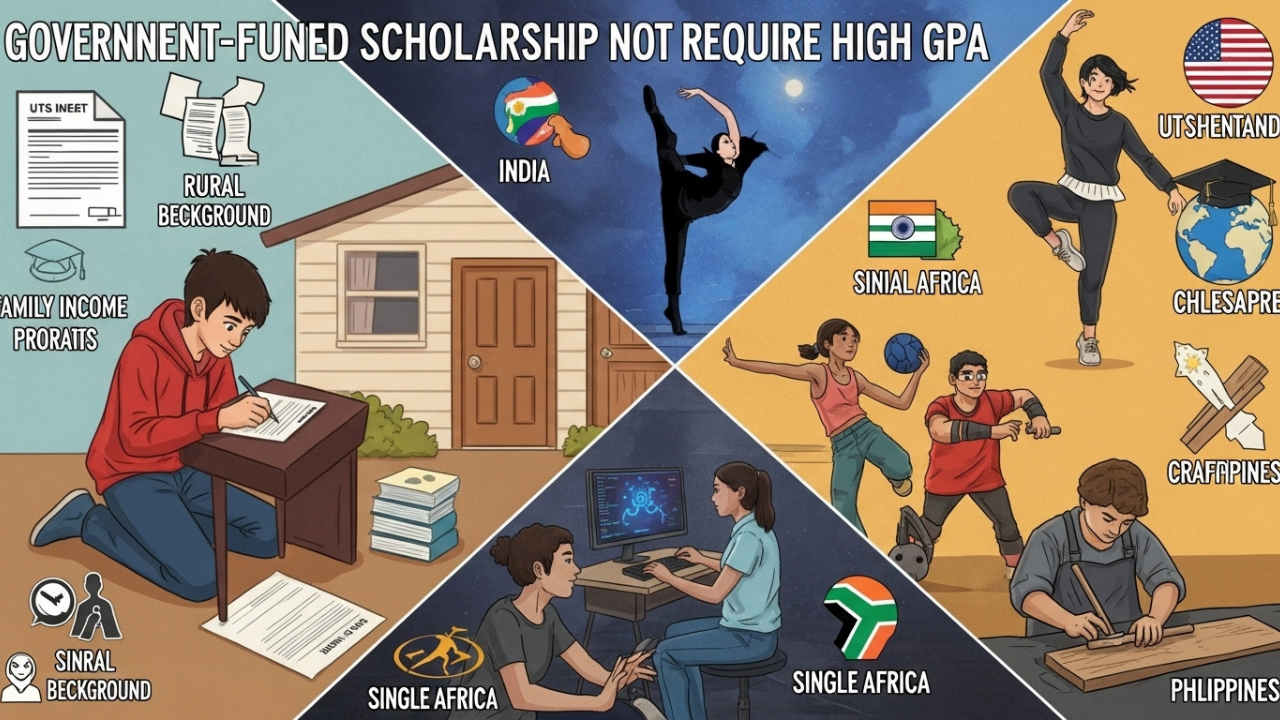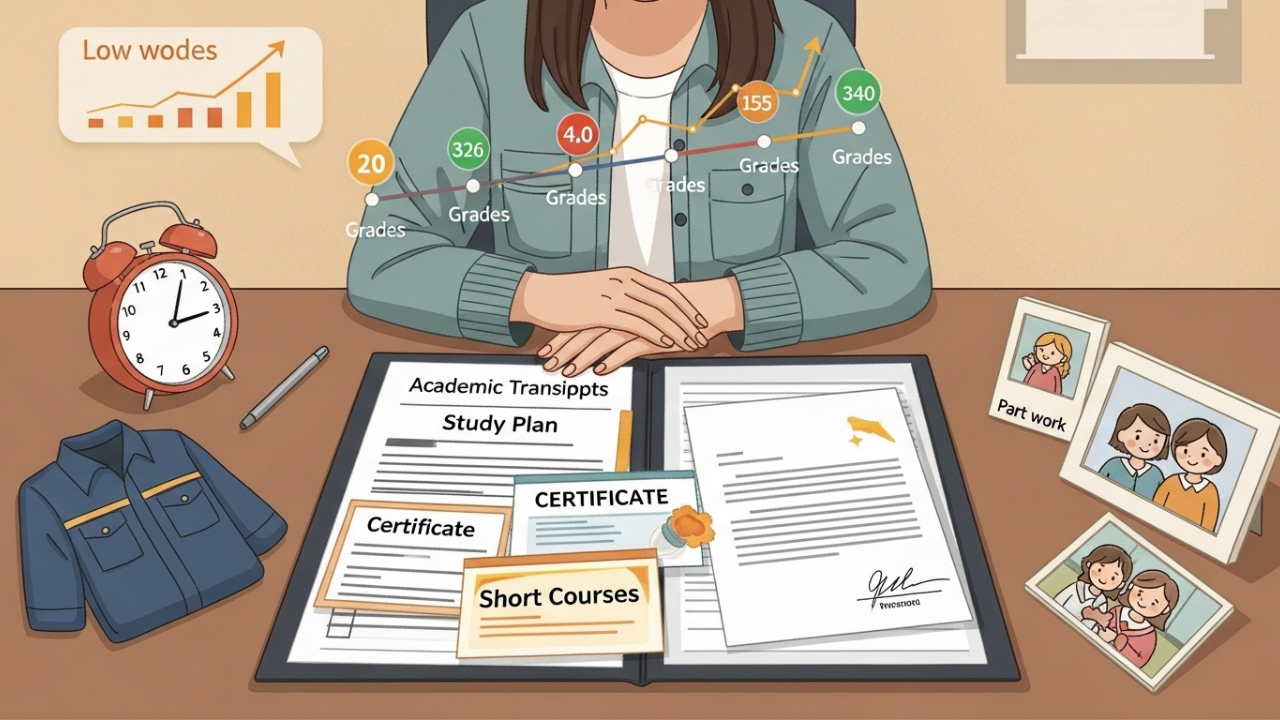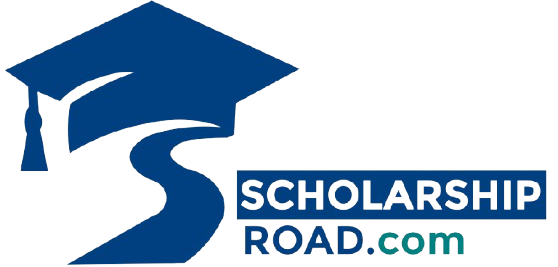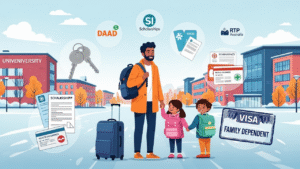If you’ve ever stared at your academic transcript and felt like the numbers there could stop your future dreams, you’re not alone. Every year, thousands of students from around the world wonder if scholarships are only for straight-A students. The truth is — they’re not.
GPA matters for many programs, yes. But it’s not the only door. And in some cases, it’s not a door at all.
Government scholarships — especially those focused on access, equity, skills, and opportunity — often do not require a high GPA or may not ask for grades at all. These scholarships exist for people who’ve faced challenges, followed non-traditional paths, or simply didn’t perform well in the academic system — but still have something powerful to offer.
This guide is for you — the student who may have average marks but strong purpose, motivation, and potential. If you’re ready to explore real opportunities, here’s where to begin.
Do Scholarships Without GPA Requirements Actually Exist?
Yes — and more than you might expect.
Not all scholarships are merit-based. Many are created to:
-
Reduce financial barriers
-
Support underrepresented groups
-
Promote specific skills or fields
-
Enable vocational and adult learning
GPA may be requested, but often it’s not the deciding factor. In some government programs, GPA isn’t listed at all. Instead, they focus on:
-
Financial need
-
Regional background
-
Personal motivation
-
Skills, talent, or field-specific promise
-
Commitment to serve in underfunded areas or industries
In short, there are pathways for students who don’t fit the traditional mold.
Types of Government Scholarships That Don’t Focus on GPA
Let’s break it down further. If a program doesn’t emphasize GPA, what does it care about? Usually, the scholarship falls into one of these categories:
Need-Based Government Scholarships
These scholarships aim to help students from low-income families or disadvantaged communities. Instead of looking at grades, governments look at:
-
Household income
-
Number of dependents
-
Social status (orphaned, refugee, single-parent household)
-
Local development index (rural or underdeveloped areas)
In the U.S., for example, the Pell Grant is awarded mainly based on income — not GPA. In countries like India, South Africa, and the Philippines, similar need-based programs exist to support students from low-income backgrounds.
Skill-Based or Talent-Focused Grants
Some government scholarships fund students in specific non-academic fields, including:
-
Music and performing arts
-
Athletics and sports
-
Craftsmanship and trades
-
Coding bootcamps or digital skills training
These programs rarely ask about your high school GPA. Instead, they want a portfolio, an audition, or proof of your skill.
For instance, a regional arts grant in Canada might support a dancer or graphic designer to attend a certified program, regardless of past academic performance.
Community, Regional, or Demographically-Oriented Scholarships
Most governments have scholarship schemes which aim at uplifting a given category of people—irrespective of academic caliber. These may be:
-
Rural students
-
Indigenous populations
-
Georgian minorities group
-
College goers of the first generation
In Norway or New Zealand, there are government-sponsored funds that exclusively help the students with Sámi or Māori backgrounds, and there is little interest in GPA. And in more location-based systems—like those that target the rural population in Southeast Asia or Africa—they do not even use marks as the primary sifting factor; rather, they will use location or community affiliation.
TVET Scholarships
The scholarships support vocational or technical education (TVET).
Not all people go to university and not all of them should. Vocational and technical tracks are necessary, and most governments give scholarships to learn plumbing, construction, automotive repair, culinary arts, or anything under the sun.
Examples include:
-
The German state vocational scholarships (via the Berufsbildungsfostersgesetz – BBiG)
-
Financial support services by TAFE in Australia
-
Apprenticeship grant in Canada
-
NSFAS bursaries in television and electronic training colleges in South Africa
In such occasions, interviewing, motivation, age, and the needs of the fields are used most of the time to determine who to select—without reference to GPA.
Real Life Examples of No-GPA Scholarships
So what about some real-world examples of government-sponsored scholarship programs that do not insist on GPA—or that give it a back seat?
Canada – SkillsBoost / Canada Student Grants
-
For adult learners or parents getting back to school
-
It is based on granting money need, not grades
-
Applied in colleges, universities, and in certificate programs
-
Admission of both part-time and full-time students
Germany – DAAD Scholarships (Special Fields)
Artists, designers, performers, and musicians are among the recipients of funds provided by some DAAD programs:
-
Portfolio and experience selection versus GPA
-
Also funds short-term research or skill-clustering exchanges
United States – Federal Direct Pell Grant
-
Undergraduates on financial need can avail the grants
-
Does not have high GPA requirement—it looks at family income and status
-
Applied in the community college, trade school, or university
Free Education in Selected Countries
-
Education is free in 22 novelty countries, including Sweden
-
Learning is tuition-free in 25 countries, including Auroville
-
Free tuition fees to the EU/EEA students
-
Most of the institutions provide housing and life facilities to non-academic tracks
-
GPA is subjective or open in programs such as teaching, nursing, and applied sciences
Africa, Asia, and Latin America: Scholarships Without GPA Barriers
Most developing countries provide scholarships through local state governments to students pursuing local trades in technical skills, rural development, healthcare, or the study of local languages—with no GPA or only low GPA requirements.
Seek programs whose management is done by:
-
Ministries of Higher Education or Vocational Training
-
National Skills Development Funds
-
Community Development Departments
These opportunities are usually advertised by local schools, NGOs, or youth centers.
The Way to Begin Searching These Scholarships
You do not have to go by word of mouth or rumors on social media. Your search can be started like this:
1. Access Government Education Portals
Each nation possesses an official education or scholarship web page. Search through using filters such as:
-
Need-based scholarships
-
Vocational grants
-
Adult learner financial aid
-
GPA-free scholarship
-
Technical skills training scholarships
Look for web addresses that end with .gov, .edu, or those operated by ministries of education.
2. Check Out Embassy or International Education Websites
If you are planning to study abroad, embassies are usually the best starting point. 90% of these websites will include:
-
Scholarship listings
-
Application guides
-
Details of language or prep programs
Platforms such as Study in Germany, EduCanada, or Study in Sweden all include options for finding financial aid—most of which do not focus on GPA.
3. Interview Schools and Agencies in Your Area
Community colleges, training centers, and local universities should not be ignored. Their financial aid offices are generally aware of:
-
Foundation grants
-
Incentive-type schemes of the government
-
Scholarship pilot programs
They can also assist with forms, essays, and interviews.
The Process of Application: Step-by-Step
You have now identified scholarships that don’t require high GPA. The next step is to apply. The process may seem daunting—but once you know how, it’s manageable.
Step 1: Find the Scholarship That Is Right for You
There is no need to apply to every program available. Don’t waste your energy on less relevant options.
Begin by asking:
-
Do I seek a skills-based or need-based scholarship?
-
Is this to qualify for a university degree, a technical diploma, or a short course?
-
Is this a local program or am I going overseas?
-
What is the deadline of application, and who is presenting the scholarship?
After narrowing down your search, create a short list of 2–3 programs that you want to target. A visit to their official websites will clarify:
-
Eligibility
-
Funding amount
-
Method of application
Step 2: Collecting the Appropriate Documents
Most scholarships will require additional documents to evaluate your background, drive, and preparedness—even when your GPA is not required.
Here is what you will generally need:
✅ ID Personal
-
Passport, National Identity Card, or Student Card
-
Must be valid during the application period and for the full course year
✅ Financial or Demographic Evidence (Need-Based Finances)
-
Family income certificate
-
Residency certificate (for regional scholarships)
-
Disability/Refugee/Minority group certificate (if applicable)
✅ Skills or Experience Evidence (Talent-Based Scholarships)
-
Portfolio (art, design, performance)
-
Awards, competition outcomes, or video demos
-
A letter of recommendation from a coach, instructor, or employer
✅ Personal Statement or Study Plan
(How to write this effectively will be covered shortly.)
✅ Application Form
-
Always download the form from an official source
-
Complete it in a readable and honest manner
-
Scan all documents clearly and use tidy filenames
Example:
"Passport_JohnDoe.pdf"
Most applications have gone digital. Neatness is a sign of professionalism.
Step 3: Post Through the Right Path
The process for sending your application may vary depending on the scholarship program:
-
Directly on a government scholarship website
(e.g., DAAD, Canada.ca, NSFAS) -
Through a school or training center
(common for TVET programs) -
Via email to the funding body
(for local or community-based programs) -
Through an embassy or international office
(for foreign government scholarships)
Always verify the submission format:
-
PDF only?
-
Are cloud links accepted?
-
Is a printed version necessary?
Be aware of language barriers, time zones, and deadlines—never assume they match your local time.
Writing a Good Personal Statement With Low Grades
If GPA is not your strongest point, then your personal statement becomes all the more crucial. This is where you explain your background, motivation, and potential.
Format of an Effective Statement
1. Start With a Purposeful Introduction
Avoid generic starts like:
“My name is Alex, and I would like a scholarship.”
Instead, try something like:
“I have always had the feeling that a skill can change a life. So, I have a reason to become a qualified electrician and help my community in the countryside of Nepal.”
This opening gives your reader a clear reason to care and a reason to continue reading.
Writing a Strong Personal Statement With Low Grades
If GPA is not your strength, your personal statement becomes your voice. This is your chance to show your motivation, potential, and growth.
2. Tell Your Difficulties—Keep It Simple
If your academic output is not the best, admit it briefly and move on.
❌ “I do not do well at school and this is why my grades are low.”
✅ “When I had problems in a regular classroom, I realized that I can learn more by doing something with my hands. It is what brought me to develop a career in auto mechanics.”
Present progress, not excuses.
3. Emphasize Your Competencies
What is special about you?
-
Working part-time to support your family
-
Volunteering in your neighborhood
-
Learning on YouTube or through an apprenticeship
-
Leading a sports team or creative project
Commitment in real life is just as meaningful as academic performance.
4. Tell Why This Scholarship Is Important
Personalize your message. Name the funder or the program.
“The program would enable me to take a certified culinary course which I would not have afforded. I intend to start a community kitchen at home.”
Hints on a Remarkable Statement
-
Keep it between 500–700 words
-
Use simple, plain language
-
Have a teacher or mentor proofread it
-
Submit it in the correct format (PDF or Word, as instructed)
When GPA Is Not Required, But Academic Records Are
Some scholarships don’t require a minimum GPA but still ask for your transcript. That’s okay. Show a complete picture of yourself through:
-
Your study plan
-
Your work ethic
-
A strong letter of recommendation
If applicable, mention:
-
Grade improvement (e.g., low grades in grade 1, better in grade 3)
-
Certificates or additional short courses
-
Work or family care while studying
These show resilience, not failure.
Common Mistakes to Avoid
Even qualified students can be rejected due to simple errors. Avoid these:
-
Filing late: Start at least 4–6 weeks ahead
-
Leaving sections blank: Use “N/A” where applicable
-
Ignoring instructions:
-
Send a one-page essay if they ask for one page
-
Don’t share a Google Drive link if they ask for an email attachment
-
-
Not following up: Some programs require interviews or confirmation. Check your email and respond promptly.
The Real Story: Achieving the Win Without the Best Grades
Fatima, age 24, born in Malaysia, did not graduate high school with honors. Still, she earned a government-funded scholarship for community development through a local NGO.
How she applied:
-
A volunteer application handwritten for a youth center
-
A self-recorded video of her sports program for girls
-
A reference letter from her school counselor
Fatima was chosen for a 1-year certificate in youth leadership—fully sponsored.
She now works in an NGO, mentoring young girls in her region.
What To Do When You Get Rejected
Rejection is difficult, but not the end.
Many successful applicants are those who applied two or three times.
Here’s what you can do:
-
Seek feedback from the scholarship provider, if available
-
Improve your documents, especially the statement or portfolio
-
Talk to a teacher, community leader, or education advisor
-
Join short programs (e.g., workshops, summer schools) to strengthen your profile
-
Retry next year, or apply to different scholarships
It’s not about being perfect—it’s about perseverance.
My Opinion| Your Story Doesn’t End Here
A low GPA is not the end of your story—it’s just a part of it. Government scholarships exist because talent, dedication, and purpose are not always measured in numbers.
You don’t need to prove that you were the best student—only that you’re ready to learn, contribute, and grow.
Start today. Look into your options, write your story, and submit that application.
The opportunity is real—and it may become the beginning of something much bigger than you imagined.
